Hand-Painted Shopfronts in Rural Uganda
Olivia Krawczyk introduces the hand-painted signs for businesses large and small in Kumi, Uganda.
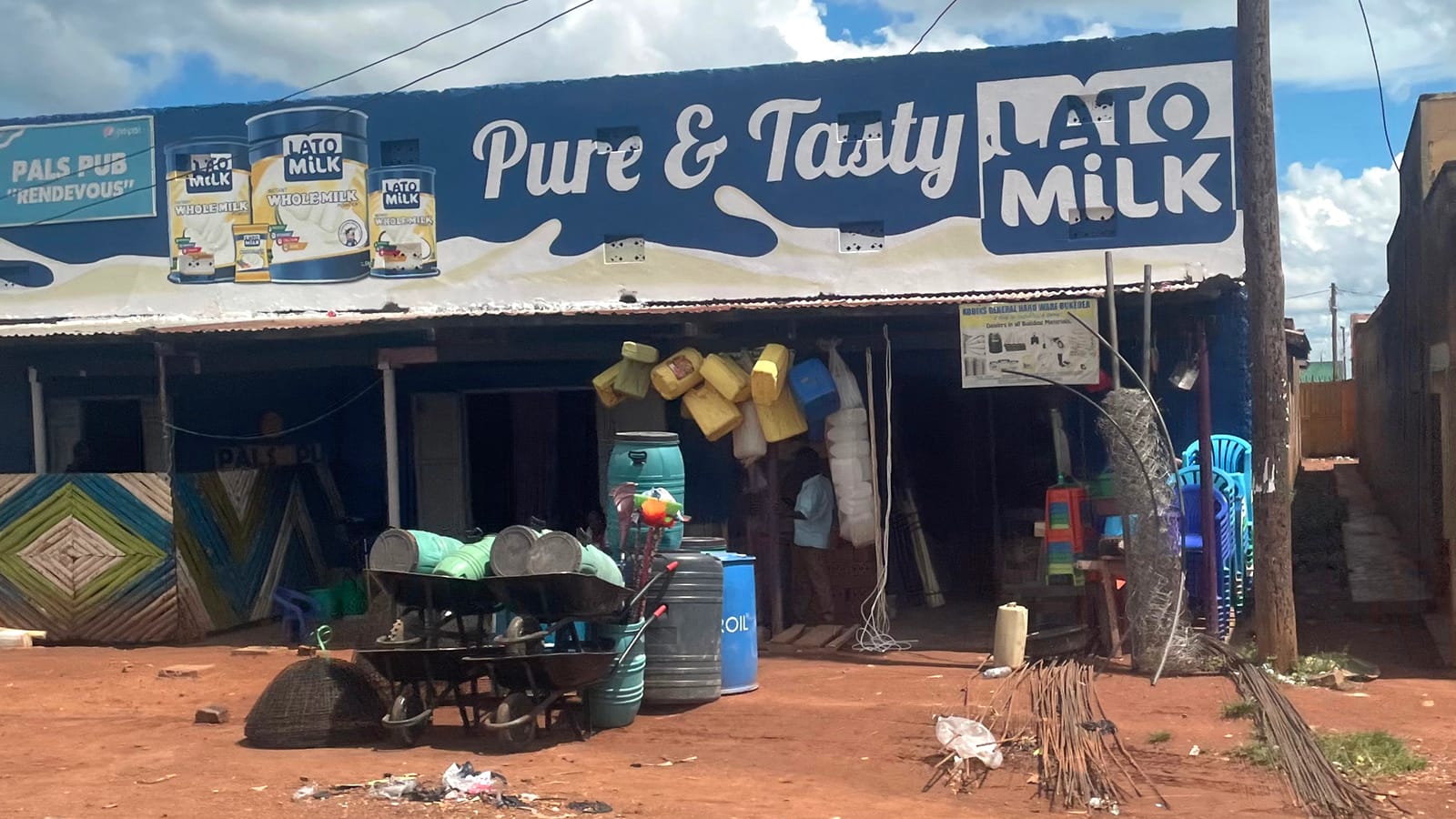
Outside of the continent itself, the most well-known facets of signs and sign painting from Africa are perhaps the Ghana's wild film posters and the 'Danfo' vehicle lettering from Nigeria. Last year, I shared some books and articles in the bonus material that accompanied the Deadly Prey feature in BLAG 04, but these are also heavily skewed towards countries in West Africa.
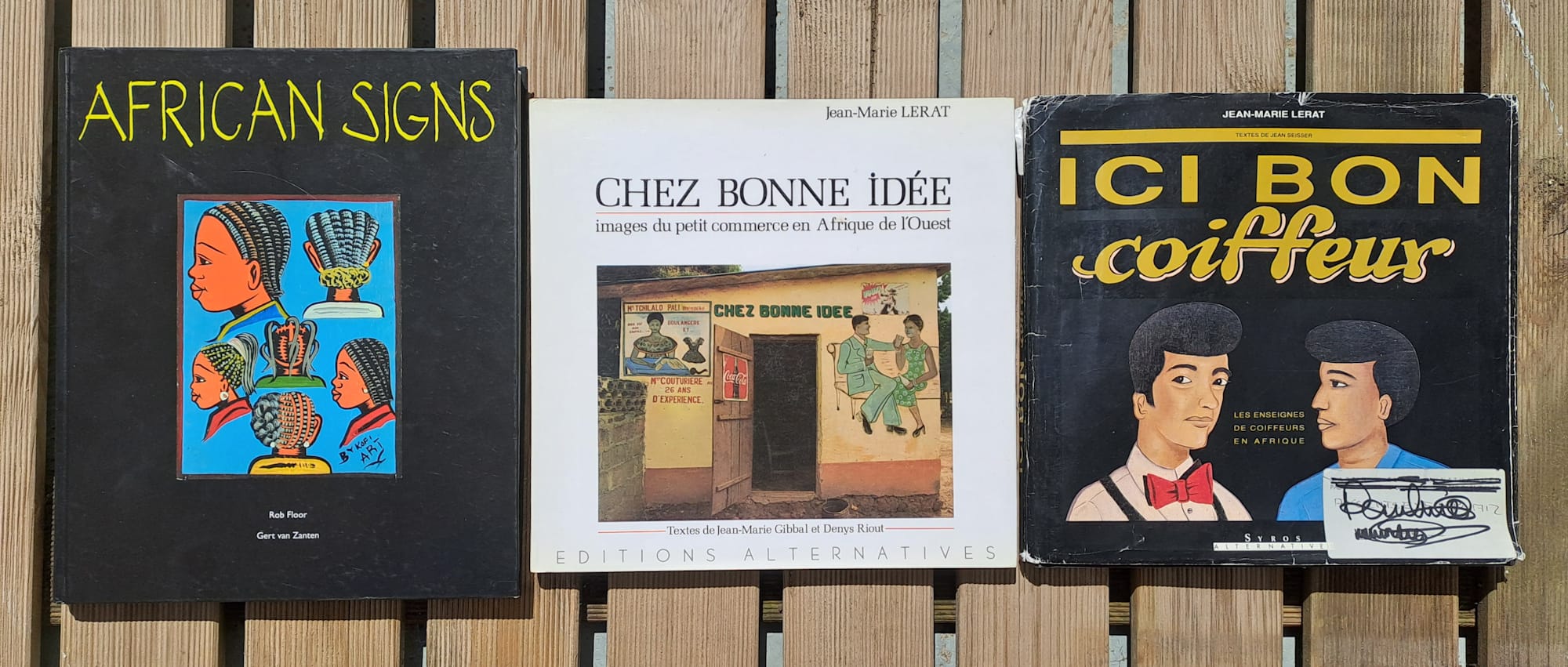
I was therefore very happy to see some material from Uganda, East Africa, which graphic designer Olivia Krawczyk shares here alongside her comments on what she's learned about the signs.
Hand-Painted Shopfronts in Rural Uganda
Walking along the streets of rural Uganda, you can’t help but notice the almost random ‘pop’ of colour on buildings. Their striking exteriors are, more often than not, part of the hand-painted advertisements that cover them.
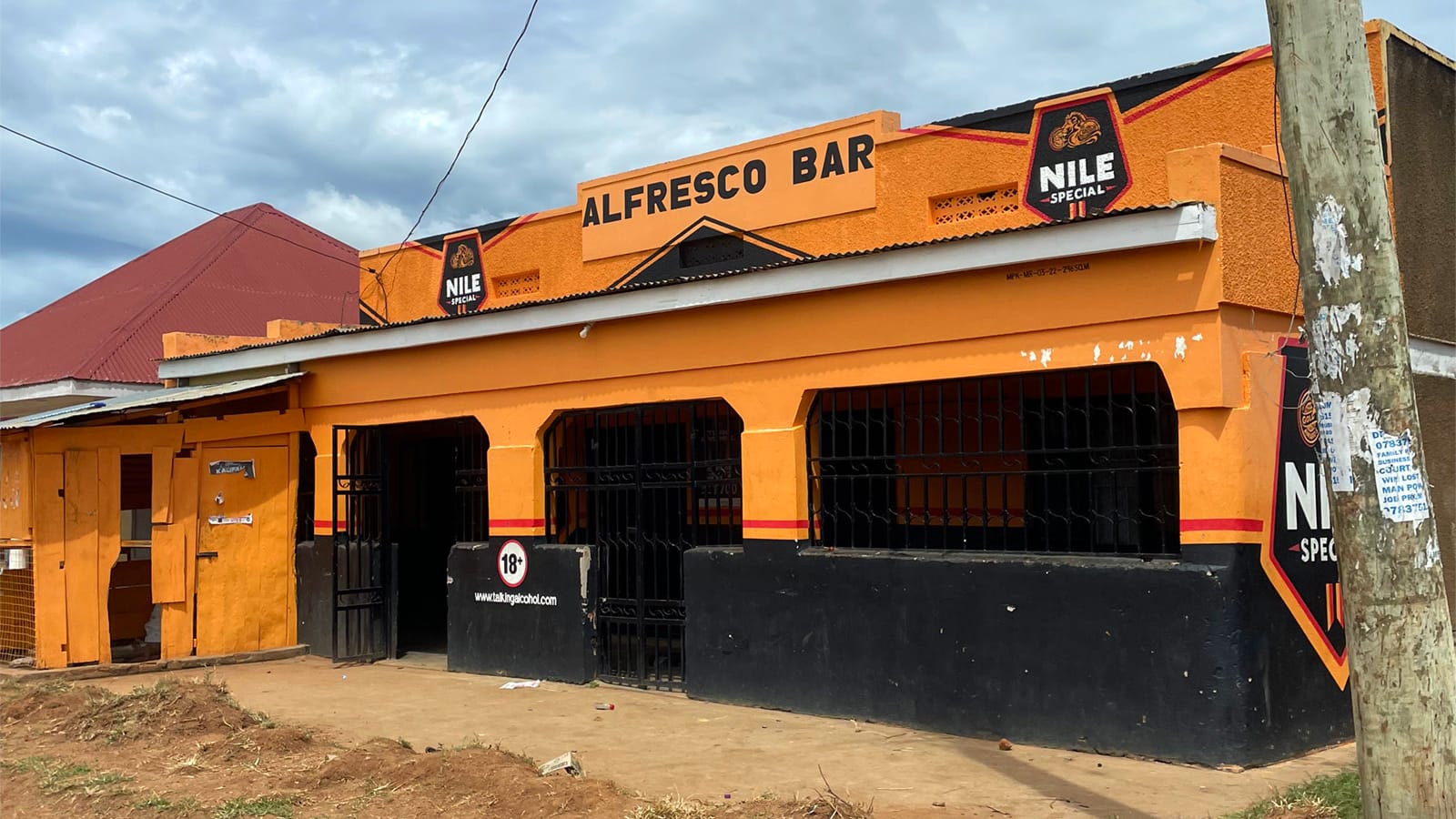
During my working visits to Uganda, I'm based in Kumi town, which is about a five-hour drive from the capital, Kampala. I spend a lot of time in the surrounding rural areas of the Kumi District, where the painted buildings have always caught my eye. This was nothing more than a passing interest until my last trip in 2023 when curiosity took over and I set out to learn a little bit more about the signs.
The Art of Making Do
In Uganda's Kumi District, money is short, but competition is high, with whole rows of shops frequently selling exactly the same products and services. The most common are hairdressers, tailors, DIY stores, and, in the central market, food and drink stalls.
So how do you stand out in this environment where the buildings all look similar, the streets are packed with people, and you have limited funds? Armed with paint and a whole lot of determination, shopkeepers turn their spaces into vibrant reflections of their trades. These amateur creations convey the impression of a competition to see who can fit the most writing onto their shop or sign, often including multiple phone numbers. The results might not be polished, but they sure are authentic.
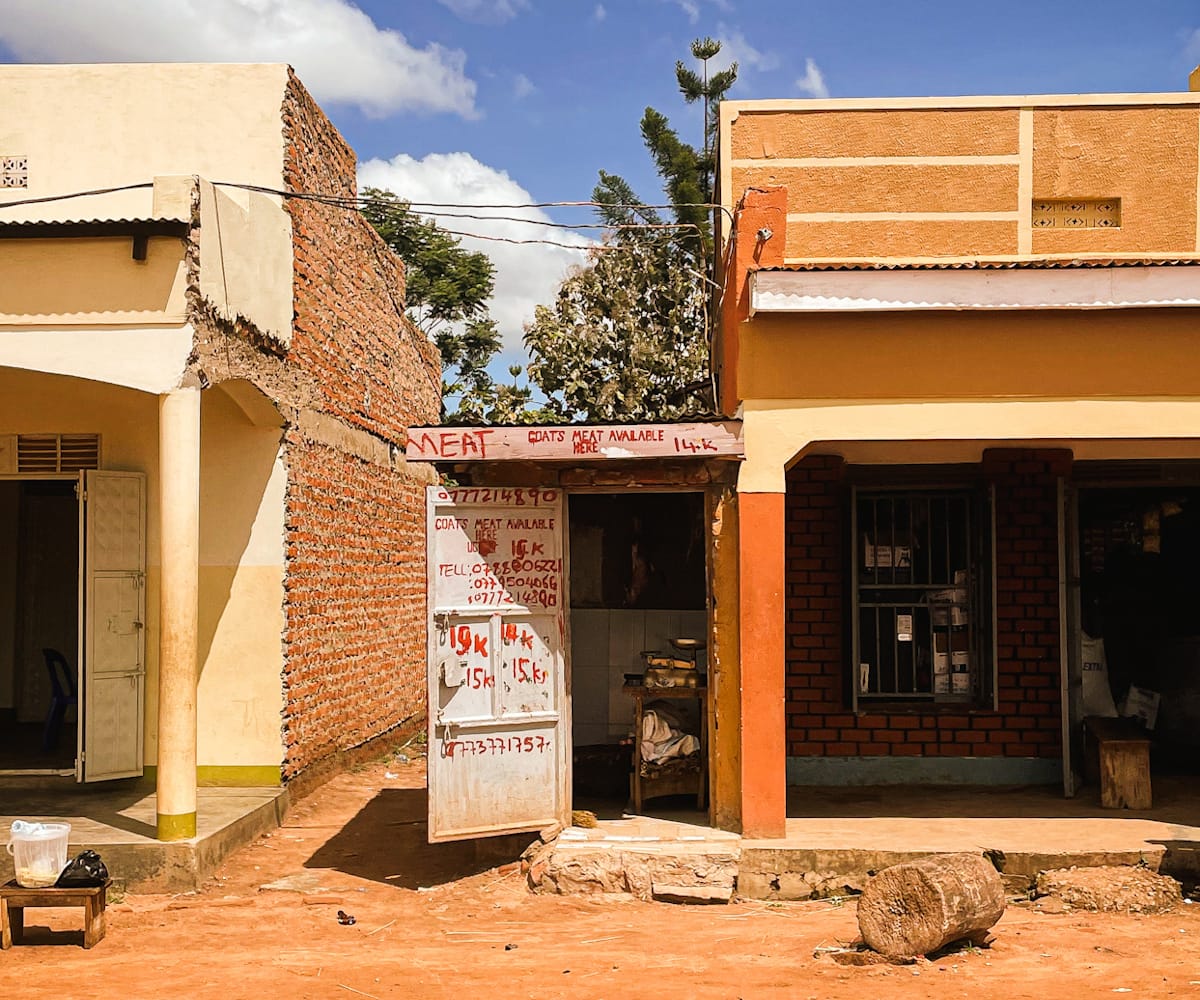
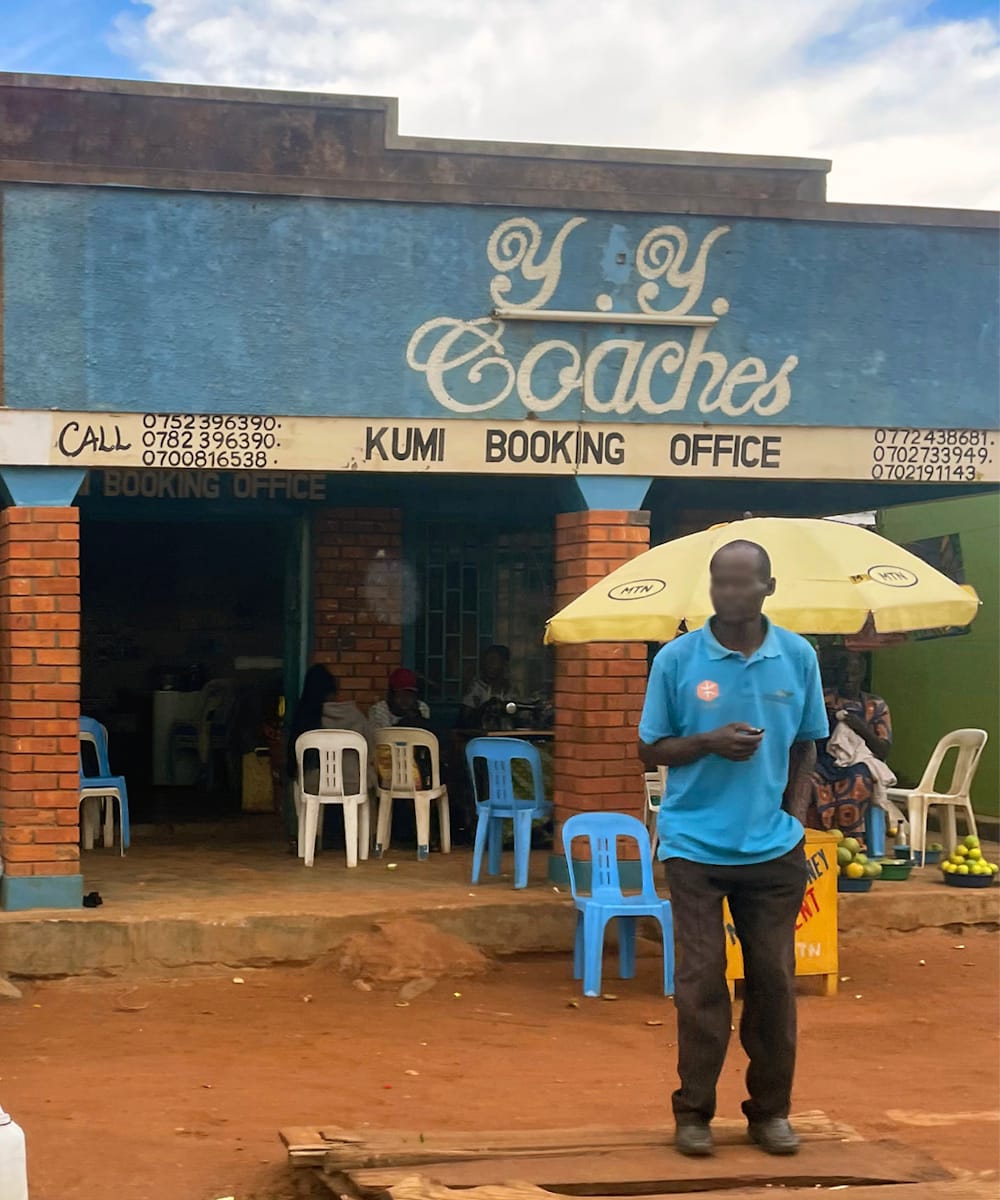
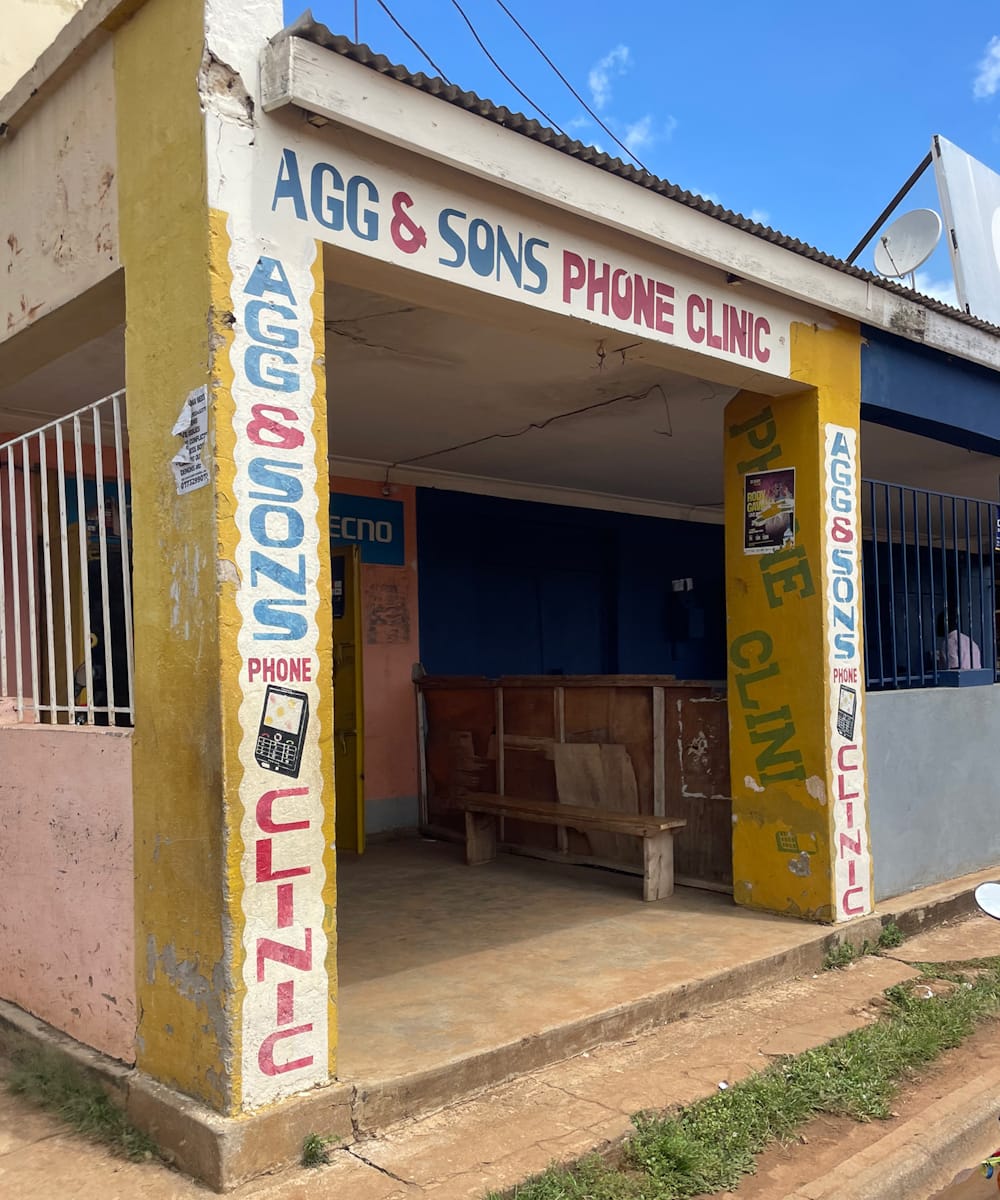
Y.Y. Coaches, Kumi's public transport booking office, gives you no less than six numbers to try, and if any of those phones need repairing, there's always the Agg & Sons Phone Clinic, which is advertised by this more professionally finished shopfront.
With tight budgets, the upkeep of these signs isn’t always a priority and this, paired with the constant exposure to the sun, means that they start looking rundown pretty quickly.
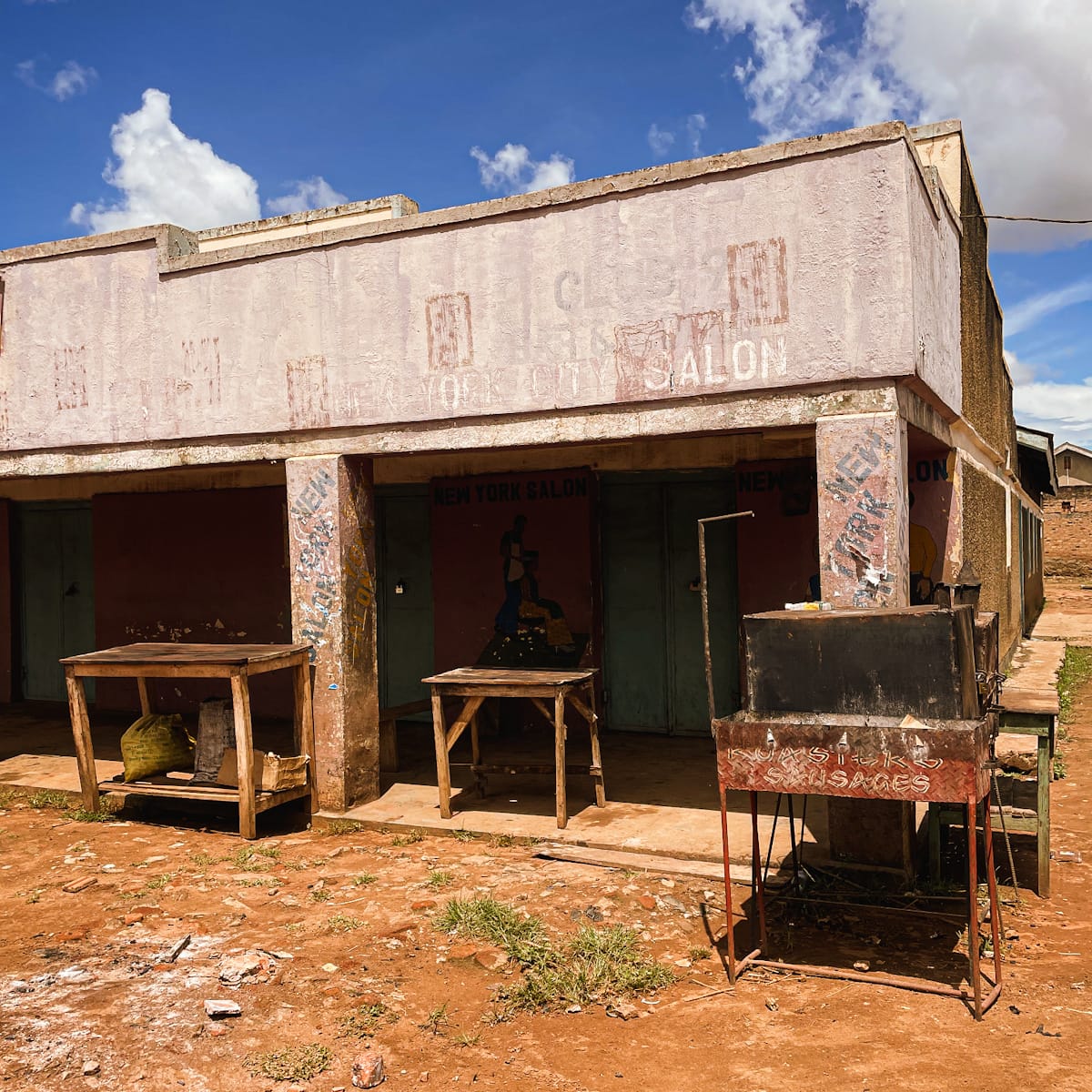
In the process of looking more closely at these faded walls, I started to notice some that are quite distinct from these DIY creations. They frequently advertise things unrelated to the shop inside — a launderette painted with advertising for a SIM card, for example — and the designs are often repeated on multiple buildings.
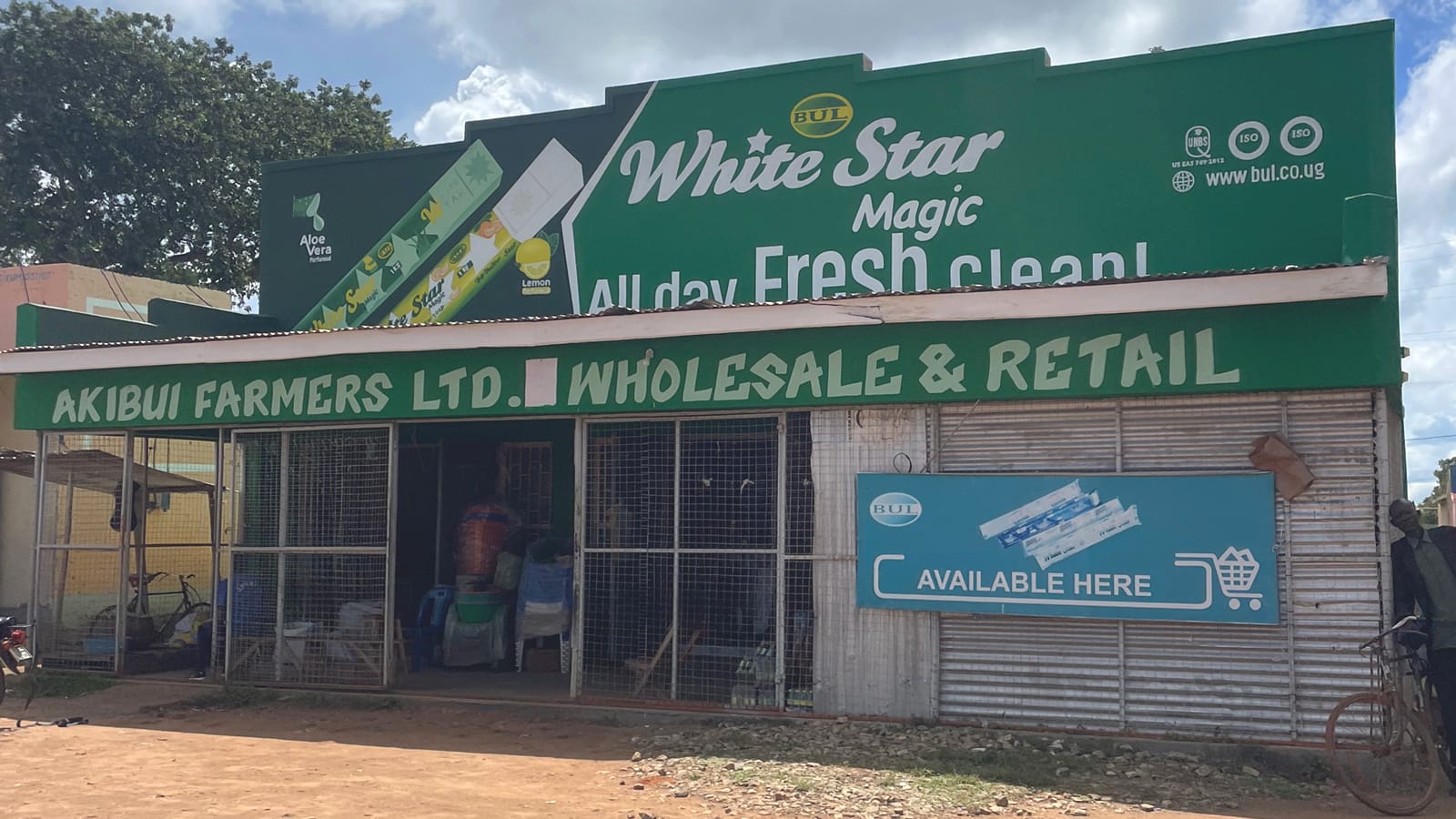
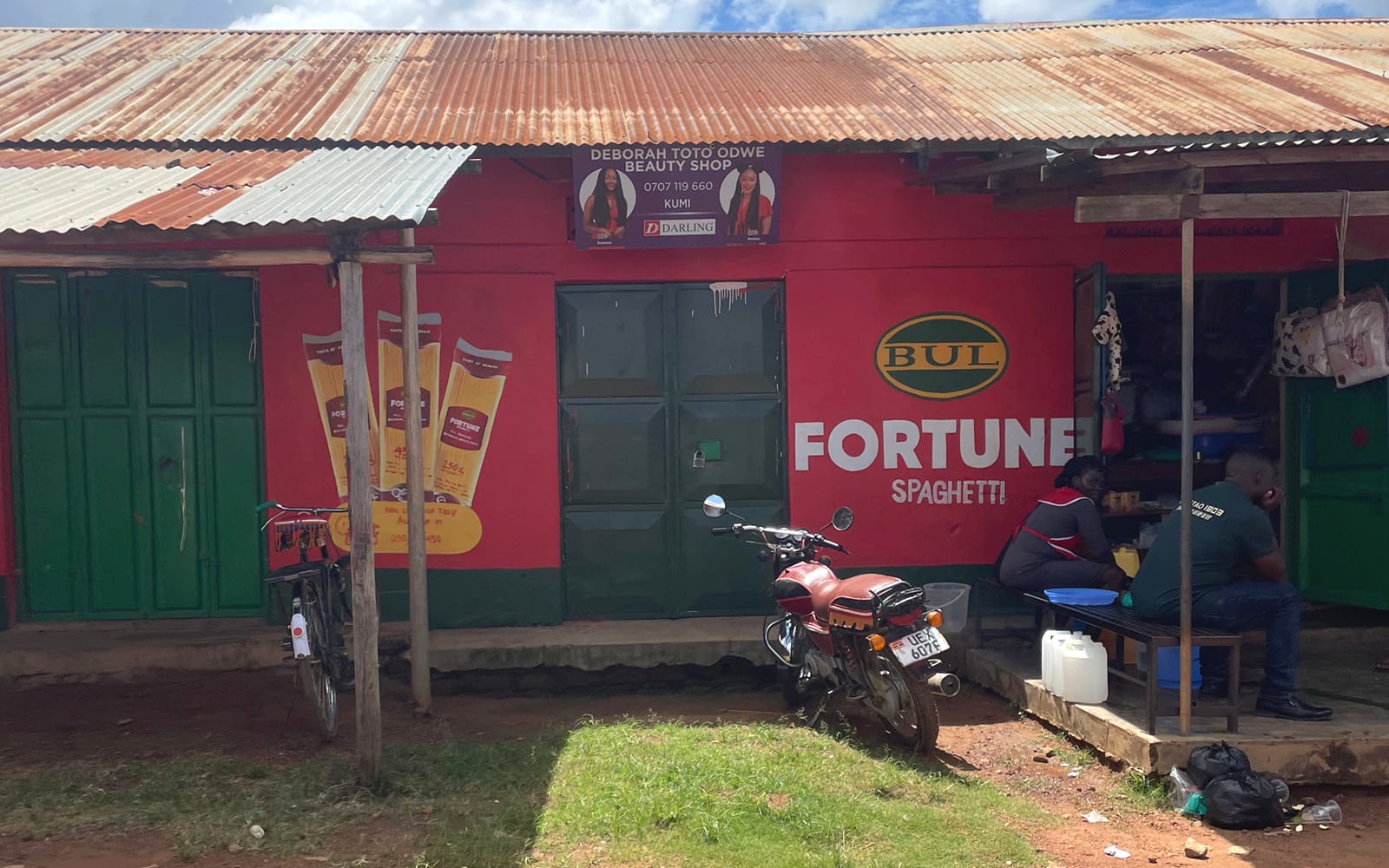
White Star Magic laundry bars being advertised on a farmers' wholesale and retail shop, and spaghetti promoted via the medium of a hairdressing salon frontage.
Corporate Murals
I soon realised that not everyone has the time, skill, or resources to paint their shop, This, coupled with bigger companies looking to advertise their products, has lead to a mutually beneficial arrangement: the companies paint the shop with their advertising, while the small business owner gets some extra income from renting the space. As a bonus, their shop looks smarter than the one next door, helping to attract more customers.
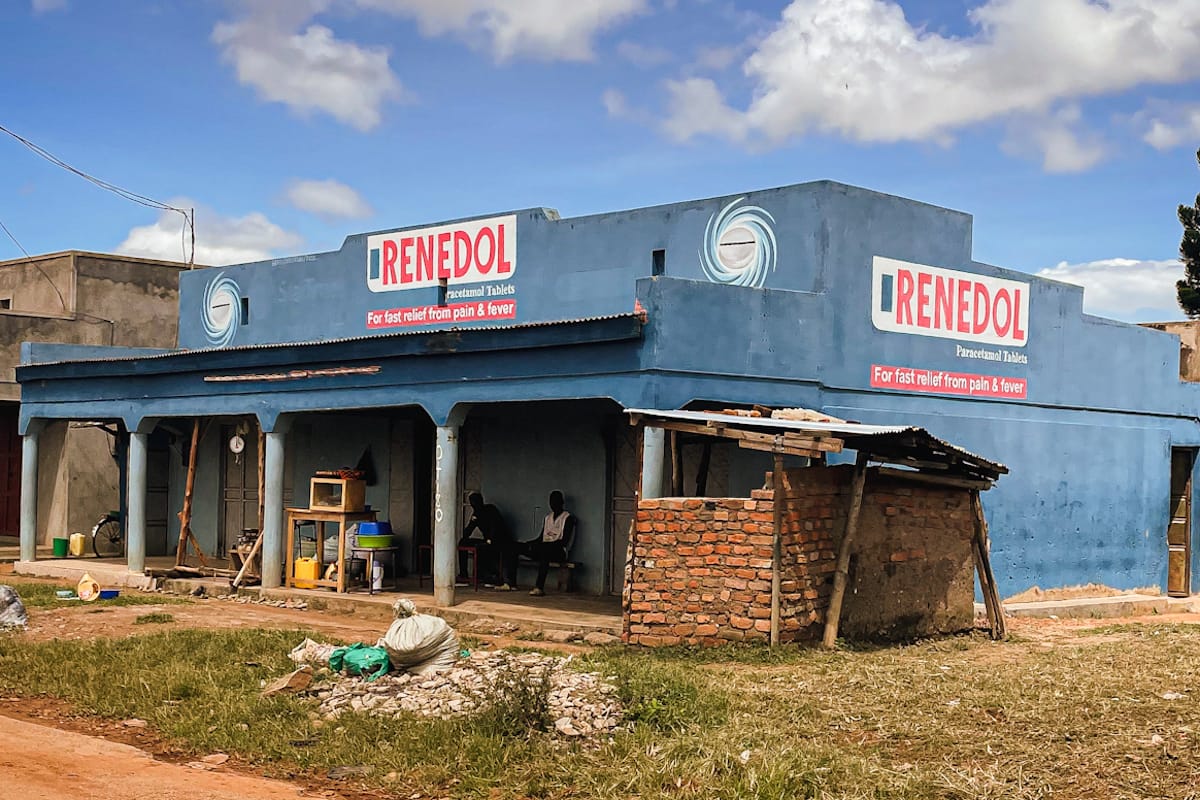
Before the addition of these painted billboards, the buildings all look very much alike, and are often in a poor state of repair. So its a no-brainer to say 'yes' when a company offers to paint your whole shop for free in exchange for their logo being front and centre.
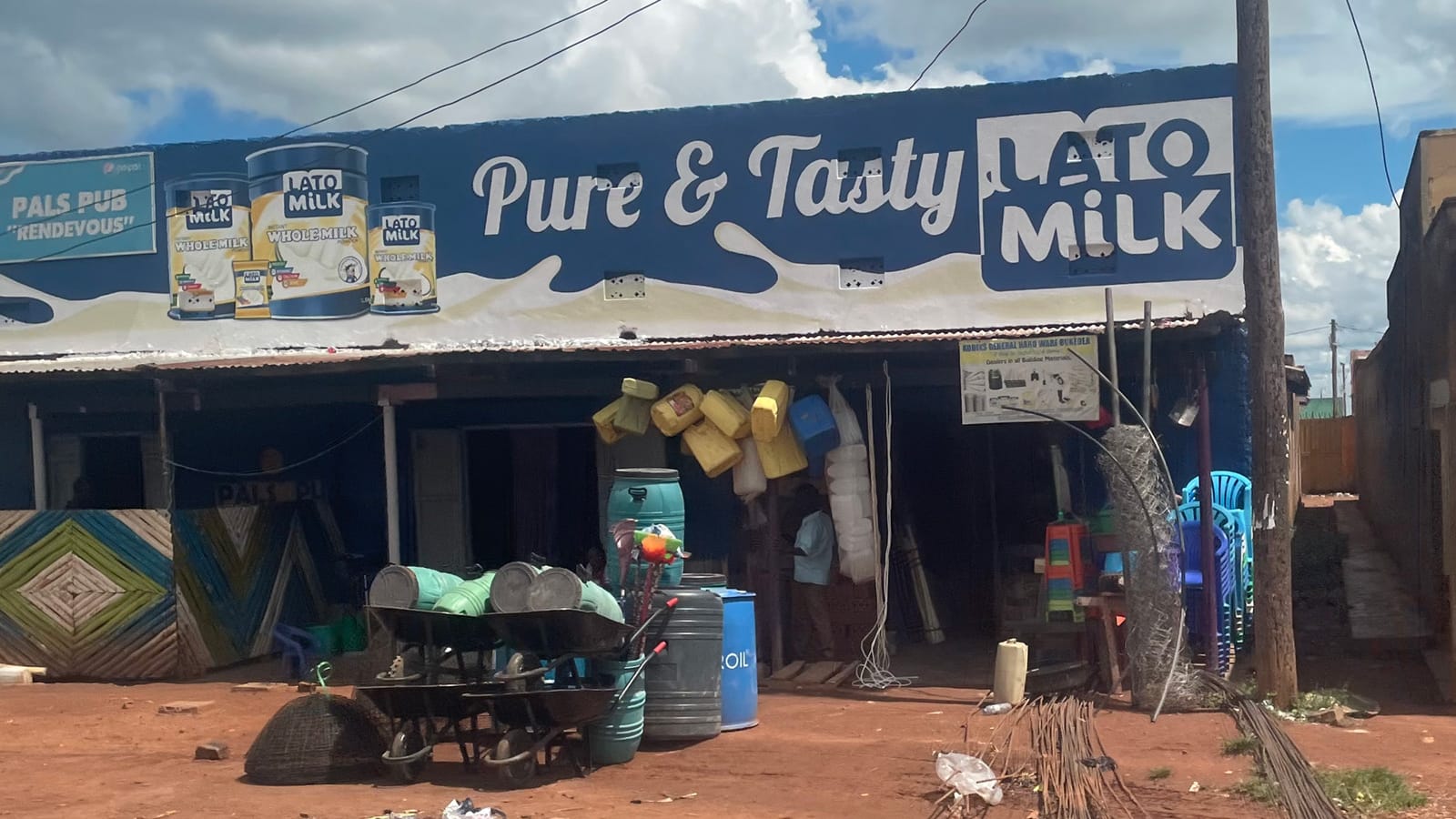
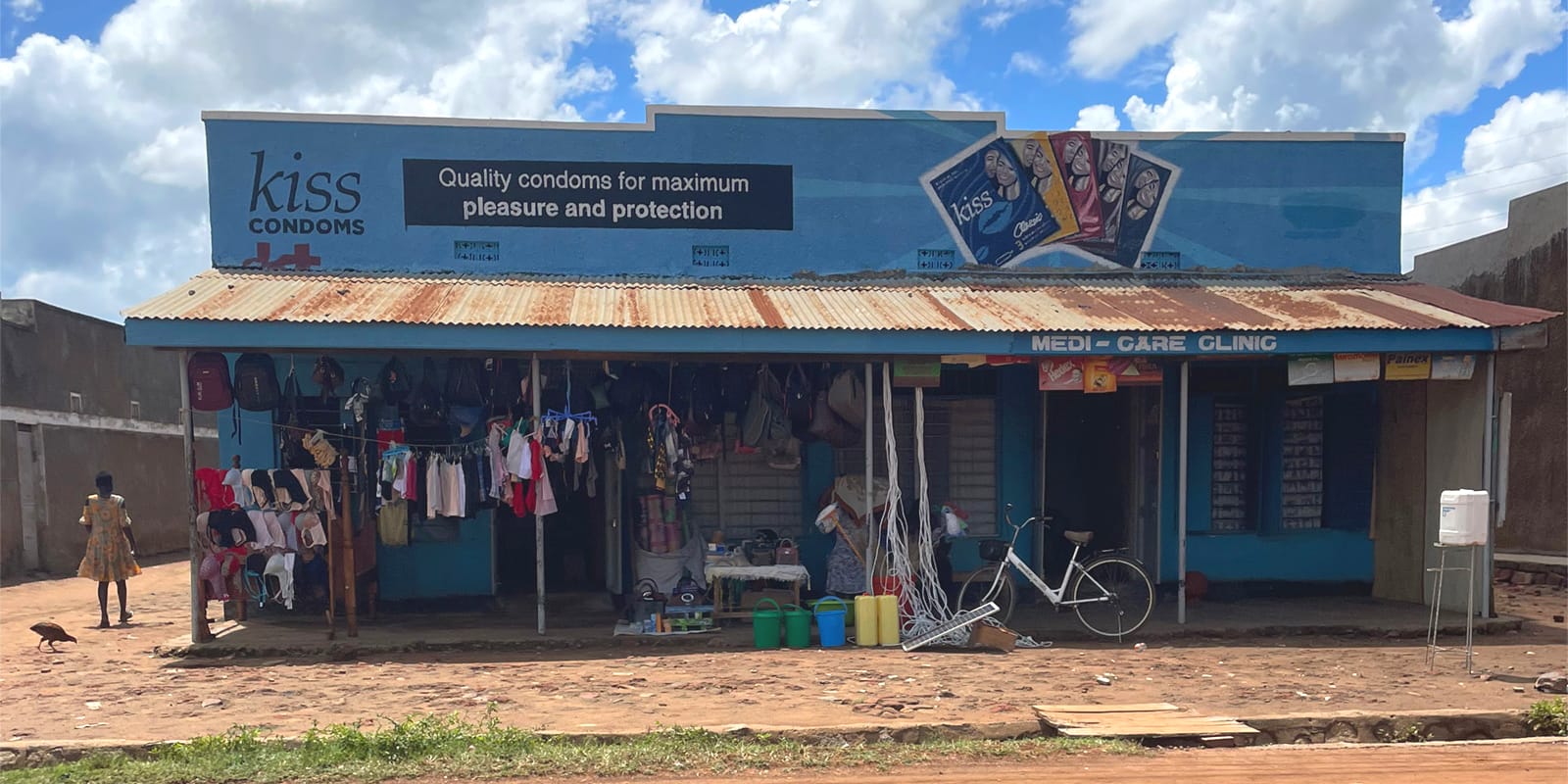
These corporate messages are eye-catching bursts of colour as you walk along the streets of Kumi, and almost all of them are hand-painted — it took me a while to realise this, as the pictorial elements are so often convincing.
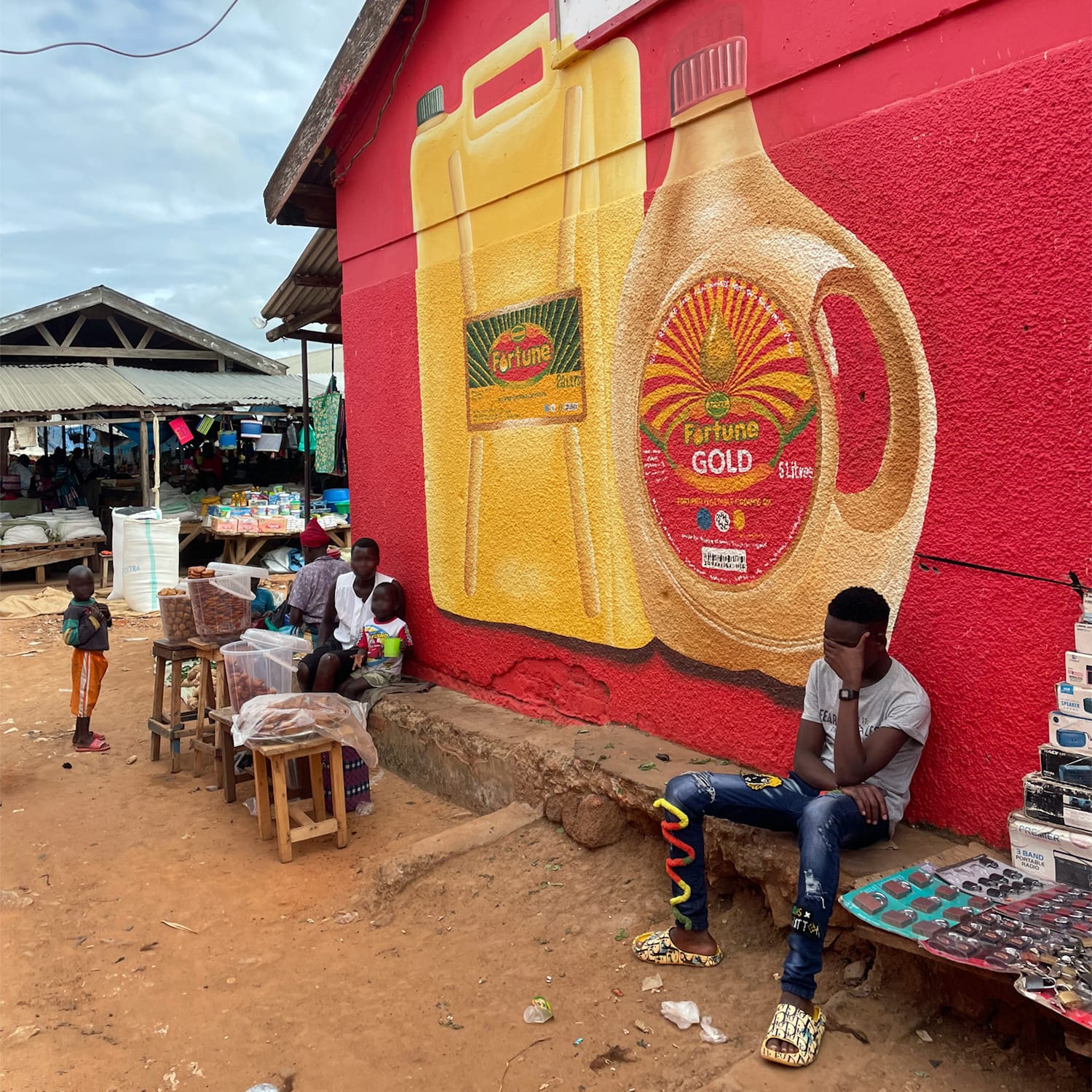
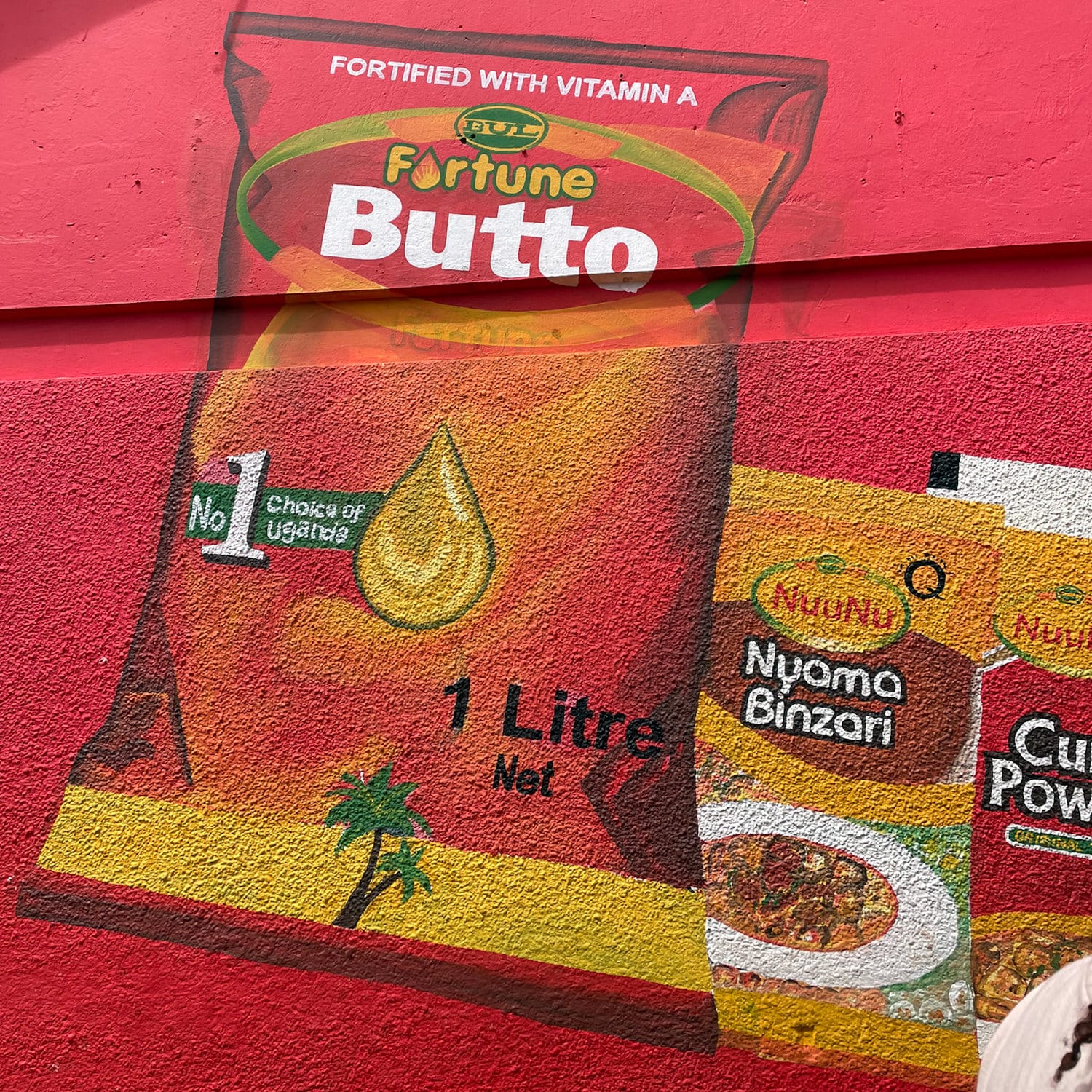
Freshly painted signs covering the entrance to Kumi's central market. They are advertising the Fortune Gold vegetable oil brand, the self-proclaimed 'Taste of Uganda'.
The Downside
Nothing lasts forever, though. Walking around Kumi and other rural areas of Uganda, you will see many buildings that were once brightly coloured but are now left in a state of disrepair. The advertisers that commissioned the signs rarely maintain them, leaving business owners with crumbling paint and no funds to fix it.
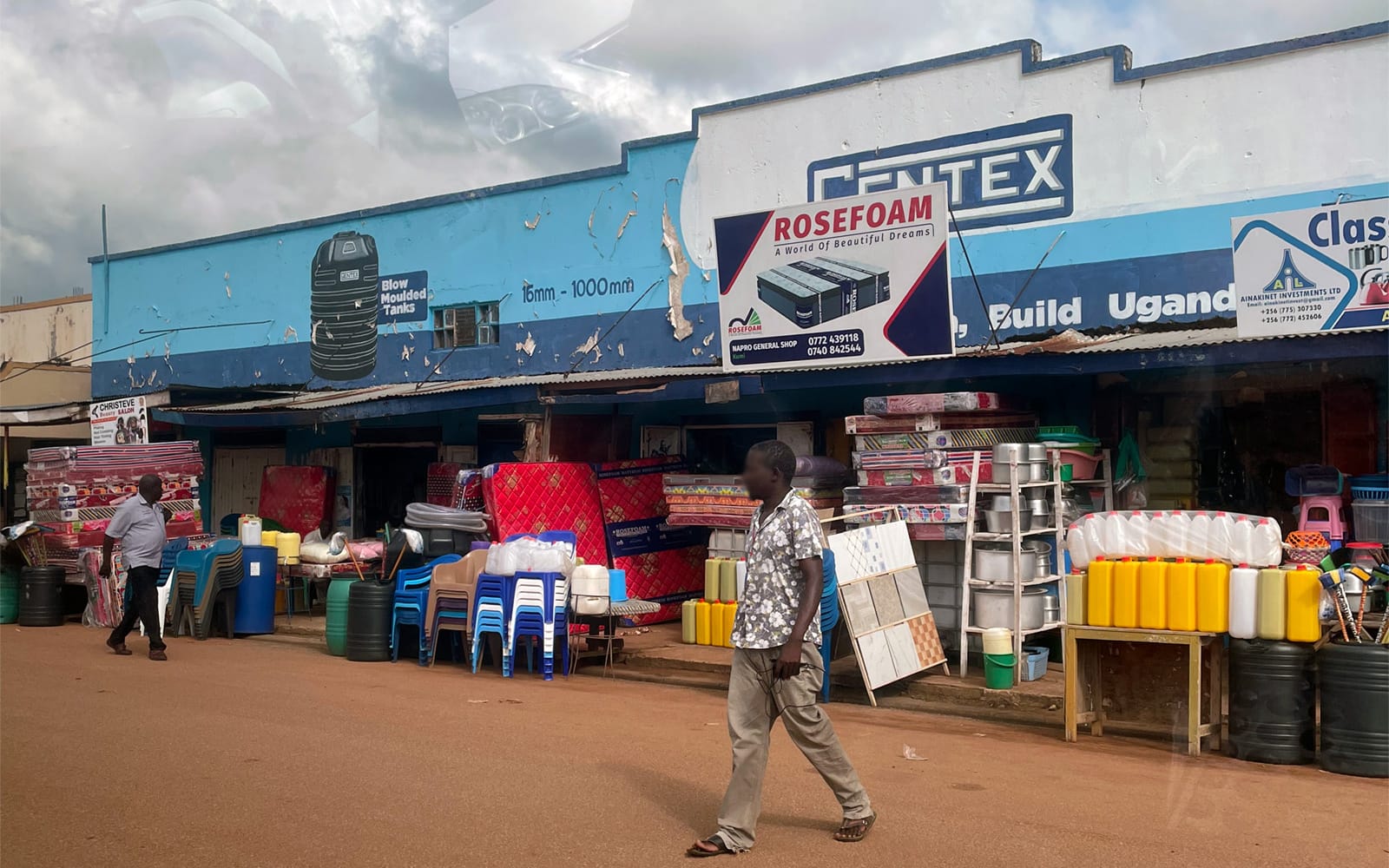
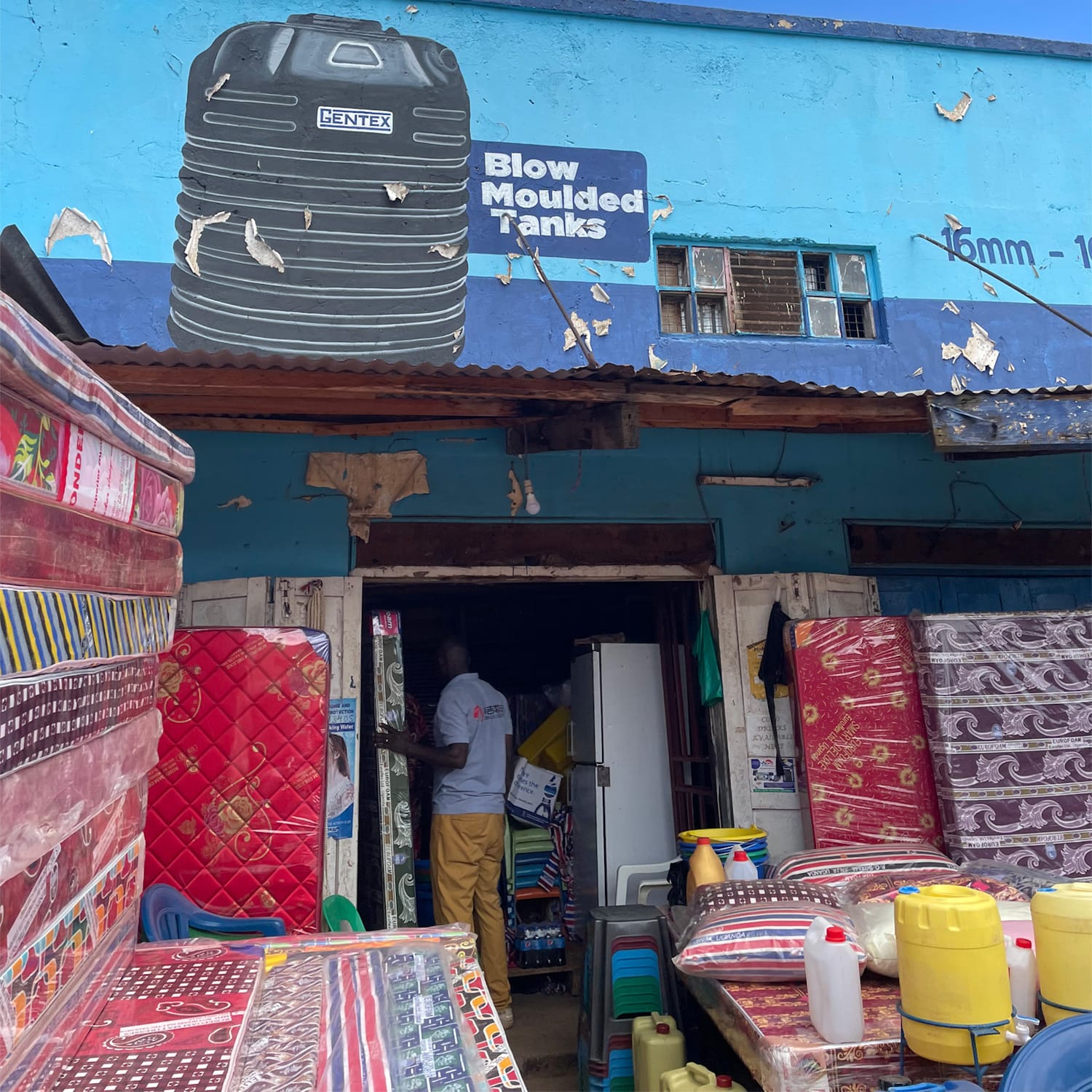
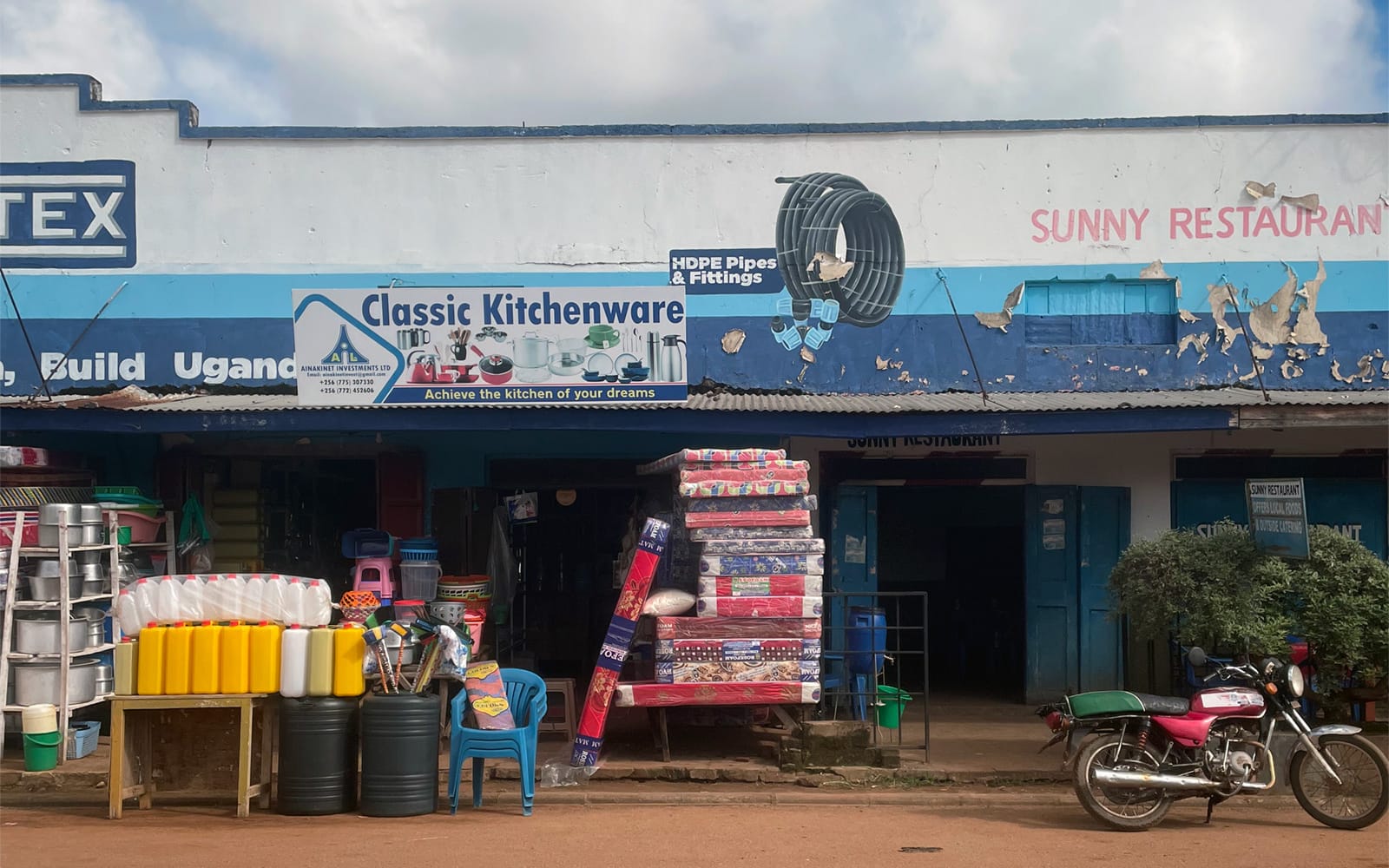
Business continues below while the paint comes loose on the Gentex advertising above.
However, these aren't just buildings; they're storytellers. They tell tales of resilience, resourcefulness, and the bridge between small local businesses and large corporations.
Photography and text by Olivia Krawczyk.
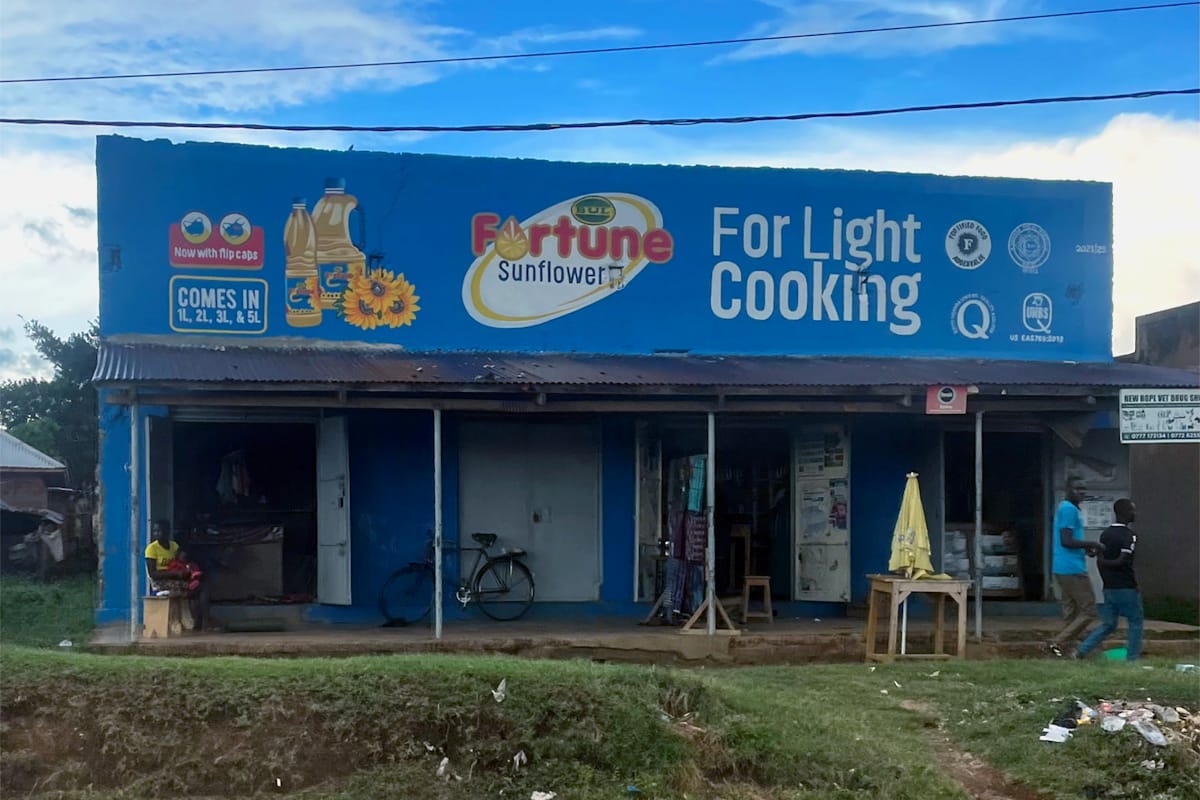
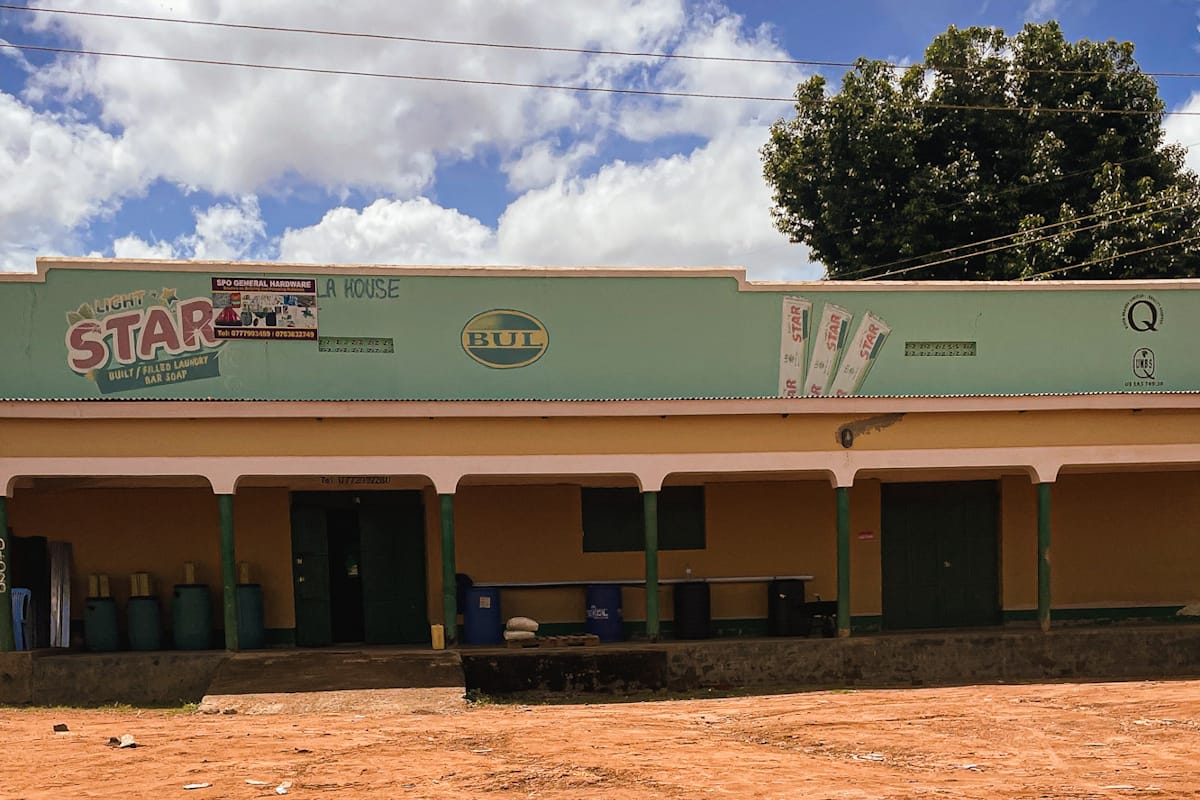
More brand advertising for Fortune sunflower oil and Star laundry bars.
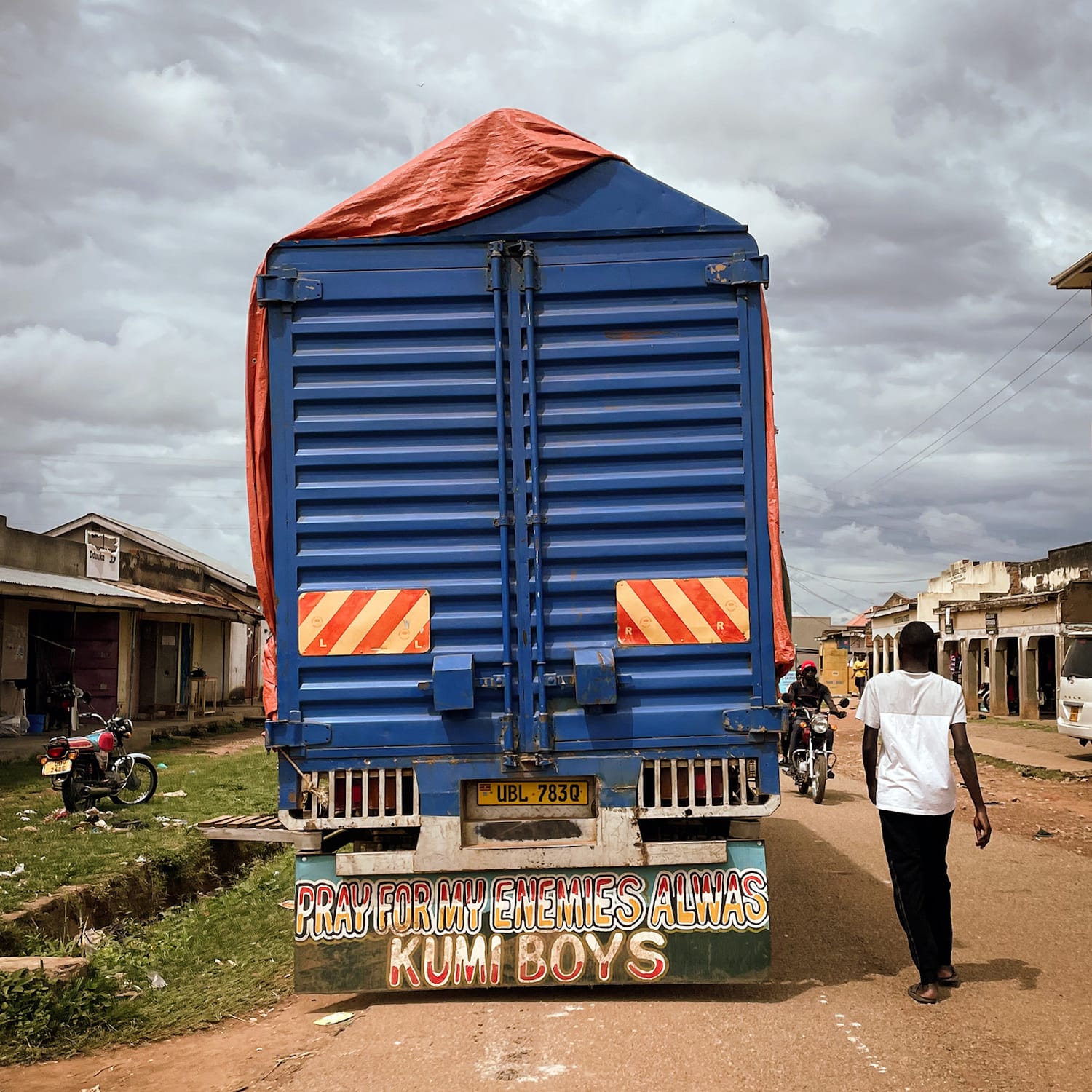
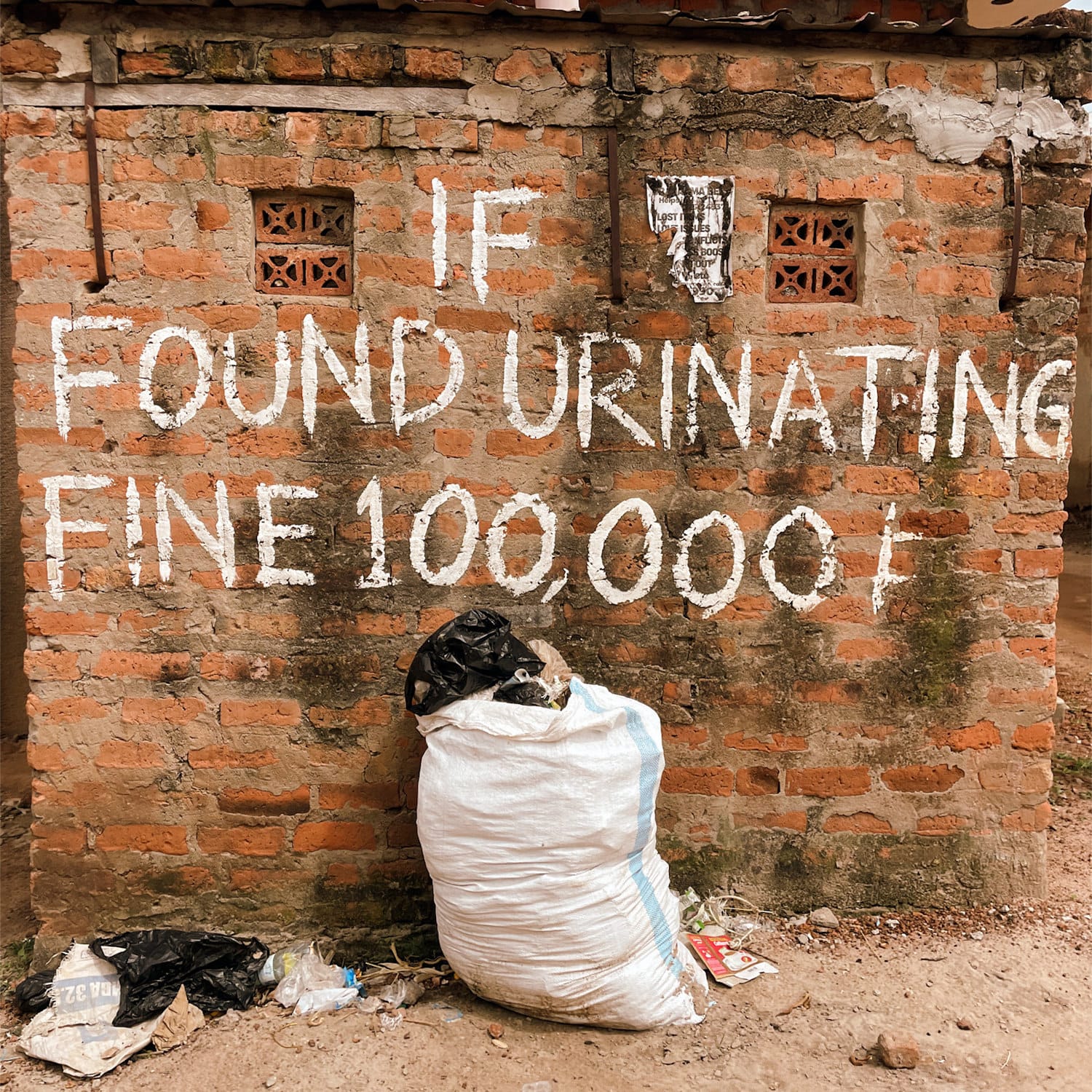
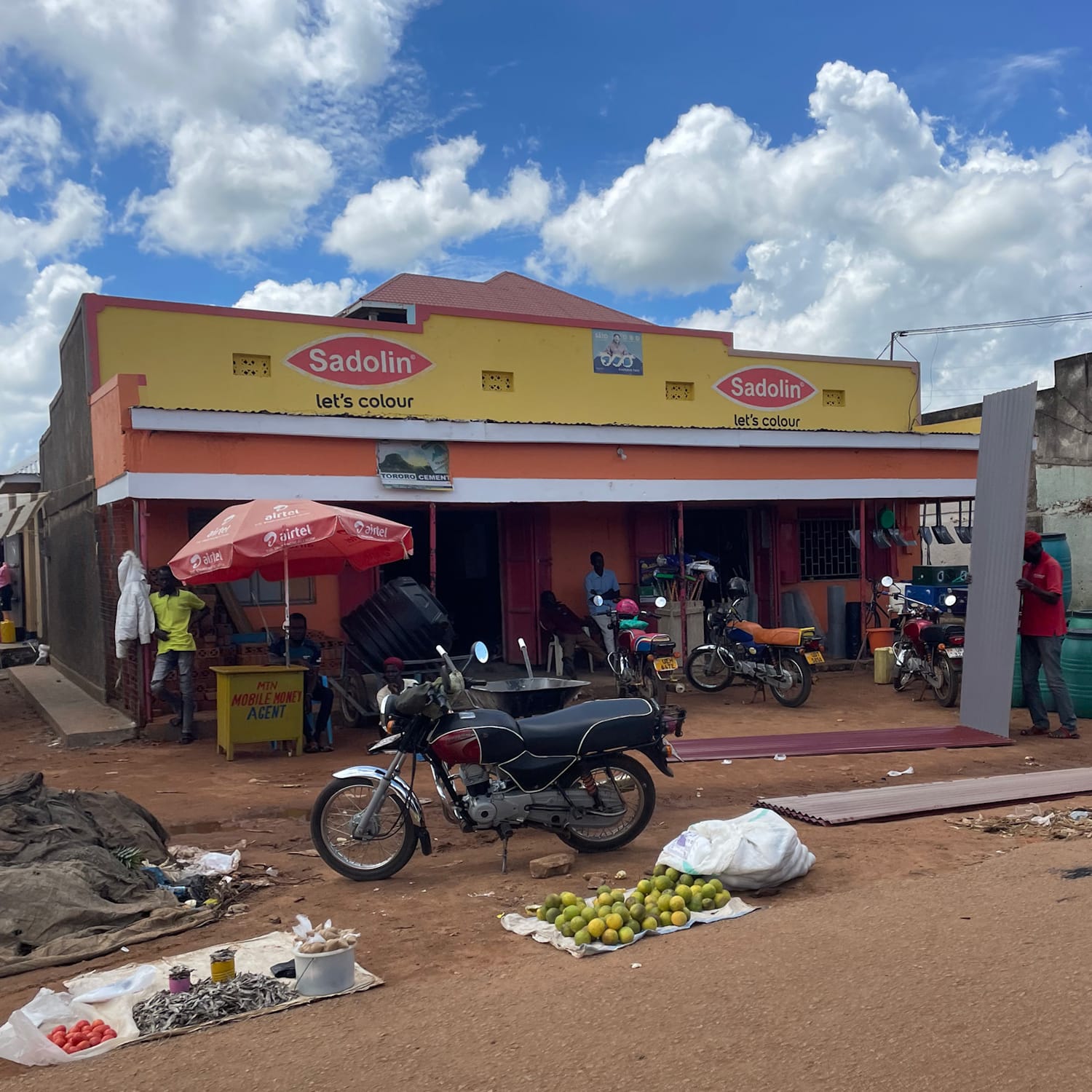
The Ugandan take on 'commit no nuisance' signs with the fine being about £20 ($25), and advertising for Sadolin paints providing the back drop for street vendor displays in Kumi, Uganda.